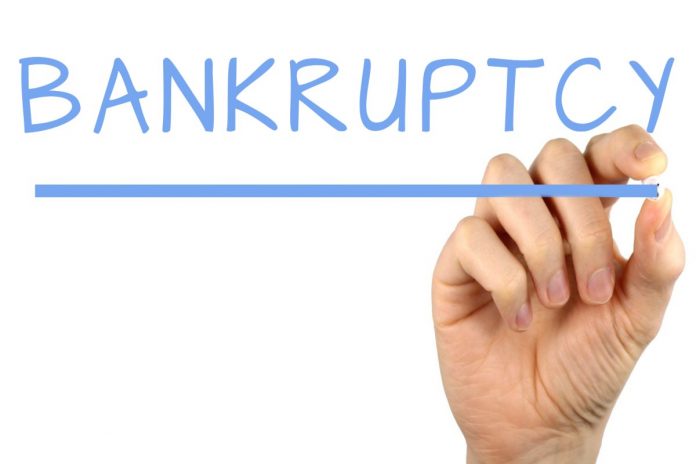This article has been written by Prakhar Rawat pursuing Diploma in International Business Law and has been edited by Oishika Banerji (Team Lawsikho).
This article has been published by Sneha Mahawar.
Table of Contents
Introduction
Bankruptcy is beneficial to those who do not have sufficient means to pay their debts and can pay their debts through a good repayment plan, by liquidating their assets. The bankruptcy proceedings is filed in a court of law in which a judge and a court trustee appraise the assets and liabilities of individuals, partnerships, and businesses who have outstanding debts so inordinate that they can no longer pay them. The court has to make a decision whether to discharge the debts or to go on with the proceedings, discharge basically means relieving people or entities who have appropriate assets to pay the bills. These laws are introduced to provide an opportunity to the people whose finances have collapsed to start anew and make amends, whether the reason for such collapse would have been a bad business decision/s or inevitable situations, the legislative intent regarding the same is to provide a chance to these businesses and individuals in a capitalist economy. A very important thing to note here is that individuals or businesses which are hesitant to take this second chance must be aware of the fact that the American Bankruptcy Institute has announced that 95.3% of these people who file under Chapter 7 of the United States Bankruptcy Code (from here on Code) are successful. This article sheds some light on the concept of bankruptcy remote structures or entities, which are used to protect some assets during the restructuring or reorganising of the bankruptcy in a particular setting.
What is Chapter 11: United States Bankruptcy Code
This chapter gives the definition of bankruptcy. There are two groups that need to be considered in this context i.e. debtors and creditors. While a debtor is a company who wants to file for bankruptcy, a creditor is some entity or person who has specific claims against the debtor. If we compare United States Bankruptcy laws with that of other countries we see that debtors get favourably treated in the US as here the importance is not given to liquidation but to reorganisation. The Bankruptcy Code has been structured in a way that it prioritises reorganisation by preserving businesses that provide jobs, valuable supply of goods and services, pay taxes, and benefit the communities.
The primary objectives of Chapter 11, Reorganisation, is to, give the debtors another chance and discharge their prepetition debts, giving the creditors a fair and equitable distribution, and while doing this allowing the debtors to plan for reorganisation, clubbing all such disputes regarding the debtor into one forum, empowering the debtors to resolve uneconomic business arrangements. While also providing the creditors with greater recoveries than they would have received in liquidation.
Restructuring modelling
If the debtor chooses to continue with Chapter 11 Restructuring, that debtor has the liberty to continue the ordinary course of the business. But if there is any such activity that counts as a detour from the ordinary course such as selling the entire company or obtaining post-petition financing, will require the prior approval of the Bankruptcy Court.
This process is useful for the debtor as it can help the debtor to turn things around in the meanwhile by reorganising its balance sheet, and trying to come back to solvency as such. The steps to file for the reorganisation is that the debtor first files all the disclosure statements which provides the necessary information to the creditors, thereafter the debtor files the plan of reorganisation and impetrate votes among the creditors after the negotiation takes place with the debtor, Unsecured Creditor Committee (UCC) then makes a recommendation on the voting to the unsecured creditors, but UCC does not itself vote, then the creditors vote on the plan of reorganisation, votes then get tabulated in classes which need a two-third in amount and one-half in a number of class, which is repeated until an agreement is reached.
After the Bankruptcy Court confirms the plan of reorganisation, and the businesses then leave Chapter 11 via an asset sale or as a reorganised company, but the bankruptcy case continues, after this process other claims such as rejection damages, voidable preferences, prepetition litigation, fraudulent transfers, etc, are resolved. Finally, the trustee allots the bankruptcy estate to creditors in accordance with the plan of reorganisation.
Bankruptcy Remote Structures
- What is a Bankruptcy Remote Structure?
Such structures which are used in the United States to decrease the risk of non-payment under a credit facility are known as Bankruptcy Remote Structures. These structures have been used in the US for 30 years now.
- Single purpose company
The Bankruptcy remote structure consists of a company called single purpose company (SPC). It is a kind of borrower, it owns a single asset generating income from it which is later used to pay the credit facility. We can call the SPC remote as it is separate from other entities which form part of the borrowing group, which generally have significant debts and own various assets, and the provisions which allow SPC to form are framed in such a way that it becomes difficult to bring SPC into bankruptcy.
How the bankruptcy remote is not so remote
- As to filing for bankruptcy
Although the Single Purpose Company has been restricted to file for bankruptcy, the bankruptcy courts have allowed these entities to file for bankruptcy when the interest of their lenders come into the picture, in the case of, General Growth Properties Inc., 409 B.R. 43 (Bankr. S.D.N.Y. 2009), where the debtors consisted of a sizable commercial real estate enterprise. Among the several entities allied to the debtors’ estate were also several Special Purpose Vehicles (SPV). It was the notion of the lenders that these remote entities are also bankruptcy proof, they thought that the independent directors will have to take the prior permission of the lenders to authorise a bankruptcy filing which was totally misconceived as was described by the bankruptcy court, “if movants believed that an ‘independent’ manager can serve on a board solely for the purpose of voting ‘no’ to a bankruptcy filing because of the desires of a secured creditor, they were mistaken.”
It is not the creditors or other lenders to who the Directors are answerable to, instead it is the SPVs and the shareholders, to whom they are answerable. Before the filing of the general growth bankruptcy, the incumbent independent directors were replaced with new directors and they gave their authorisation for the same without taking consent from the lenders. As a result of this, the secured lenders citing bad faith and unauthorised action filed before the bankruptcy court to dismiss the case for the above reasons. Many of these SPVs were not in need for bankruptcy relief, though the bankruptcy court did not allow the claims of the lenders, and held that it is the interest of the entire enterprise which has to be looked into and not only a group of lenders as such in making the decision to file individual SPVs.
- Through substantive consolidation
Although this might sound as a rather harsh remedy, oftentimes the bankruptcy courts have forced remote entities into bankruptcy by merging these entities with the other allied estates of the debtors’, ( Westlb AG v. Kelley, Bank of N.Y. Trust Co. v. Official Unsecured Creditor Comm (2014)). The important thing to understand here is that this remedy is to provide the creditors with adequate distribution of the funds. The court looks at factual analysis while considering the consolidation, they include being compliant with corporate formalities, liberty of decision making, severalty of operations including offices and financial statements, holding of assets, etc. The result of this consolidation may affect those SPVs, which have not been meticulously looking after the organisational and operational needs.
Conclusion
It is important to look at the purpose of creating the Special Purpose Entity and contrasting it with the impact that it has on other assets which are a part of the other structure of the asset which includes those entities which are susceptible to debts and also forms the part of the bankruptcy estate as such, it is important to note here as we have established through various authorities that although the Special Purpose Entity is different from the Big Entity which contains all other entities which are susceptible to bankruptcy, it is not completely free from the constraints of the inclusion in the same list, in the interest of the Shareholders and also the majority of the stakeholders it can file for bankruptcy, also it can be consolidated with the bigger chunk of the assets of the debtors’ when the interest of the Creditors is on the line and they are not getting enough relief as such.
References
- https://advance.lexis.com/open/document/openwebdocview/Bankruptcy-Remote-Vehicle-Financial-Restructuring-Bankruptcy-Glossary-/?pdmfid=1000522&pddocfullpath=%2Fshared%2Fdocument%2Fanalytical-materials%2Furn%3AcontentItem%3A5NNS-TFY1-F60C-X3NK-00000-00&pdcomponentid=149080
- https://www.mondaq.com/unitedstates/insolvencybankruptcy/375950/the-not-so-remote-possibility-of-the-bankruptcy-of-a-bankruptcy-remote-entity
- https://www.toptal.com/finance/bankruptcy/chapter-11-bankruptcy-what-is-it
Students of Lawsikho courses regularly produce writing assignments and work on practical exercises as a part of their coursework and develop themselves in real-life practical skills.
LawSikho has created a telegram group for exchanging legal knowledge, referrals, and various opportunities. You can click on this link and join:
Follow us on Instagram and subscribe to our YouTube channel for more amazing legal content.
 Serato DJ Crack 2025Serato DJ PRO Crack
Serato DJ Crack 2025Serato DJ PRO Crack











 Allow notifications
Allow notifications


